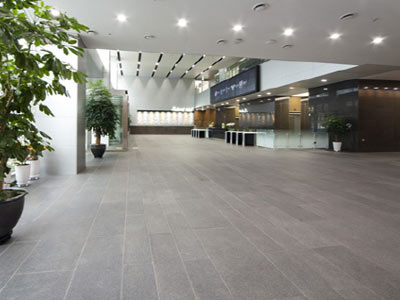UPDATE: We have designed an LED Light requirement Calculator to find out number of lights and Lumen/Watts required for Room.

Purchasing LED lights is not as easy as other lights. You should know some basics of LED lights. However it is not a rocket science, but one should spare some time to take correct decision.
After deciding brand, product, color and watt, biggest question arise is quantity or number of led lights needed. Consumers rely on their interior designer or previously experienced person in this decision, and ask them how many led lights do I need?
The amount of Light Required:
Amount of lights is always personal preference, just like the color shade of your wall. But at least minimum amount of required light and well distribution of light should be considered.
More lights: What if you install more than required lights? Most of the consumers think we can install more and cheap lights, and then we can switch off unnecessary lights. Remember LED lights should be used at maximum to get full return of your investment. If you can do dimming, it would be great in this case.
Less lights: What if you install less lights to save money? You won’t get enough illumination. You need to install more lights but not possible due to interference in interior design or due to electric connections.
Amount of light is measured in lumens & Lux. Lumen is intensity of light, while Lux = light amount per square meter. Almost all of the lighting products mention lumens in their description. So you need to decide how much lumens you require.
Lumens calculation formula

Measure the area of premises.
Calculate area = Length X width
Lets have a practical example of how many led lights are required in a bed room or drawing room.
If we consider a room of 12 feet x 12 feet size, then area will be 144 sq.ft.
Now we need area in sq.meter so you need to multiply with 0.093
We have now area = 144×0.093 = 13.39 sq.meter
Every premise needs different light level requirements. A showroom requires more light than library. Living room needs more light than bedroom. You can find many sample data for your premises on internet. Here are some data.
- Halls and conference rooms – 500 lx
- Classrooms – 300lx
- Stairs in public buildings – 75 lx
- Bedroom – 150Lx
- Stadium – 750 Lx
Now consider bed room of size 13.39 sq. meter. We want 150Lx, so we need to multiply.
Lumens = 150(Lux) x 13.39(area) = Around 2000 Lumens
Now choosing lights: A typical well built LED downlight provide 80-110 Lumens per watt, let’s consider 100 lumens.
So we need total of 20W LED light to get 2000 lumens and 150 Lux for our sample bed room.
That means number of LED lights = 20w( total light)/5W(single light) = 4.
If you consider florescent tube or CFLs, they provide 60 lumens per watt, but in all directions. So you need more than 35W to get sufficient lighting.
Factors affecting the amount of light
Quantity of number of LED lights required per room also depends on following factors:

- Color shade: Dark shade of wall requires more lights
- Height of ceiling: More heights require more lights.
- Objects: Lots of furniture, display items, complex geometry requires more lights.
- Wastage: Light very close to wall will waste more amount of light by reflection. You have to install more lights in this case
- Amount: More small lights distributed in room can give good illumination than one big light.
All these calculations are just for reference. It is not most accurate data. Human eye can see in full moon light(0.25 lux) as well as mid noon light(110,000 lux) also. Lighting level is relative field.
